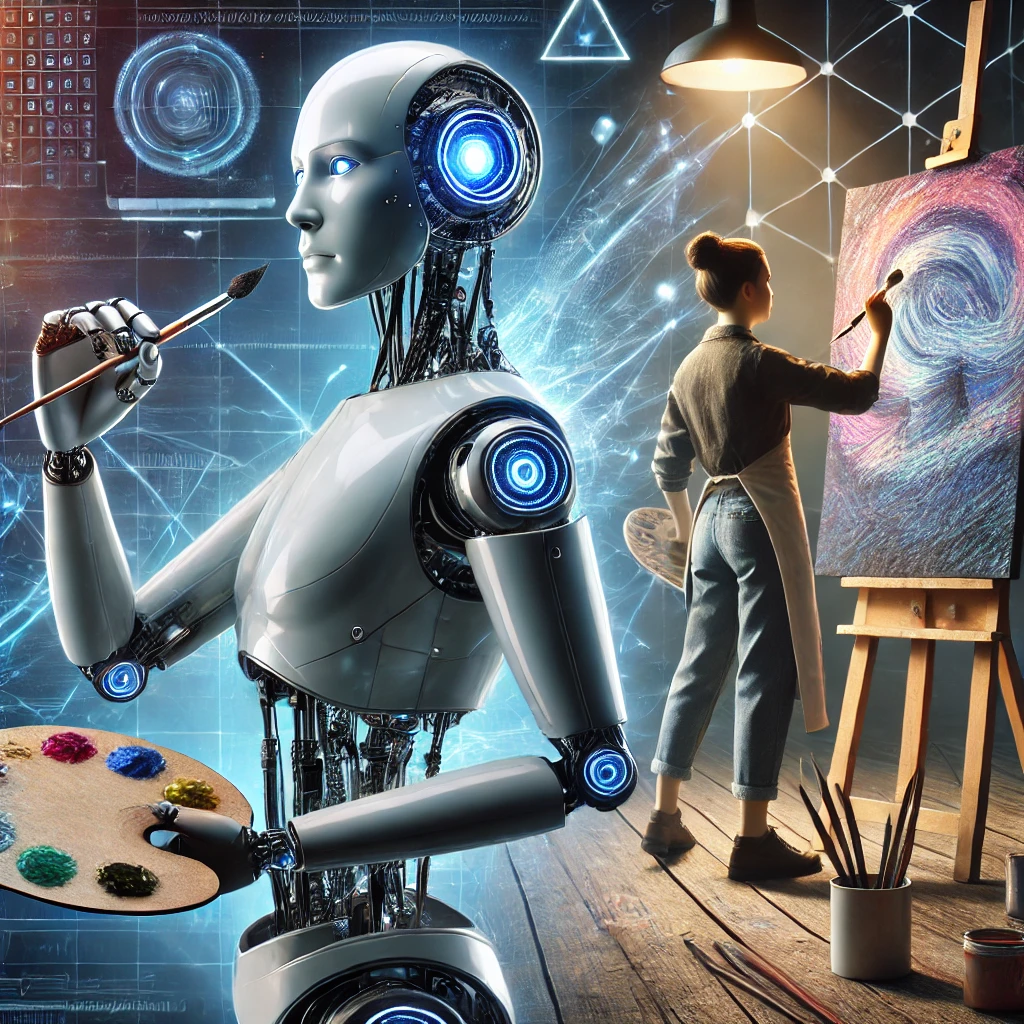
Artificial Intelligence Updates: Can AI Replace Human Creativity?
Imagine a world where robots write novels, paint masterpieces, or compose symphonies that tug at your heartstrings. Sounds like a sci-fi plot, right? But with the rapid advancements in Artificial Intelligence (AI), this future doesn’t seem too far-fetched. The burning question is—can AI genuinely replace the magic of human creativity?
What is Creativity, Anyway?
Before diving into the AI debate, let’s break down creativity. Is it just about generating something new? Or is it the messy, emotional, and often unpredictable process that comes from human experience? Creativity is like a kaleidoscope—constantly shifting, colorful, and deeply personal.
The Rise of AI in Creative Spaces
With the surge of Artificial Intelligence updates, AI is not just crunching numbers anymore. It’s writing poetry, composing music, and even creating digital art. Tools like DALL·E, ChatGPT (hey, that’s me!), and DeepArt are pushing boundaries. But are they really “creative,” or just masters of mimicry?
How AI Generates “Creative” Content
AI doesn’t daydream or get inspired by a walk in the park. Instead, it analyzes patterns—lots of them. Think of it like a supercharged blender: it mixes existing data in new ways. It’s impressive, but can it replicate the raw, emotional depth of human artistry?
Emerging Tech Trends Shaping the Creative Landscape
From Innovative Gadgets to Smart Home Technologies, the creative toolkit is evolving. Here are some mind-blowing trends:
1. AI-Powered Art Generators
Platforms like DeepDream create surreal, psychedelic images. They’re captivating, but do they have a soul? That’s debatable.
2. Music Composition Tools
Apps like AIVA compose symphonies. Beautiful? Yes. Emotionally rich? That’s where humans still win.
3. Writing Assistants
AI can draft blogs, scripts, and even novels. But that quirky, personal touch? Still very human.
AI’s Strengths in the Creative Realm
- Speed: AI can generate content in seconds.
- Consistency: No writer’s block here!
- Data-Driven: AI identifies trends and optimizes content accordingly.
The Human Touch: Where AI Falls Short
While AI dazzles with efficiency, it lacks:
- Emotional Depth: AI doesn’t feel joy, sorrow, or nostalgia.
- Authenticity: It can imitate but not originate genuine life experiences.
- Contextual Nuance: Subtle cultural references often fly over AI’s head.
Future of IoT and Its Creative Potential
Now, let’s sprinkle in the Future of IoT. Imagine smart homes where devices collaborate to create art—your thermostat setting the mood while your smart speaker composes background music. Wild, right?
AI Tools for Daily Life That Inspire Creativity
AI isn’t just about replacing creativity; it can amplify it. Think:
- Photo Editors: AI enhances images with minimal effort.
- Content Generators: Writers get over creative blocks faster.
- Design Software: Architects draft complex models swiftly.
Sustainable Technology Innovations in Art
Speaking of the future, Sustainable Technology Innovations are shaping eco-friendly creative practices. Digital art reduces paper waste. AI-driven design tools minimize material waste in architecture. It’s creativity with a conscience.
5G and Its Impact on Connectivity in Creative Industries
With 5G blazing across networks, artists can collaborate globally in real-time. Imagine co-creating a song with someone halfway across the world—no lag, just pure synergy.
Can AI Replace Human Creativity? The Verdict
Here’s the twist: AI isn’t here to replace us. It’s here to collaborate. Think of it as a super-smart assistant—great at tasks, but it doesn’t dream, hope, or imagine like we do. Creativity isn’t just output; it’s the messy, beautiful process behind it.
Final Thoughts
AI is like a mirror—it reflects what we feed into it. But true creativity? That’s a heartbeat, an impulse, a story only humans can tell. So, while AI will continue to dazzle, the soul of art and invention will always belong to us.
Frequently Asked Questions (FAQs)
1. Can AI create original art?
AI can generate art based on data, but it doesn’t experience emotions or original inspiration like humans do.
2. How is AI used in creative industries?
From writing assistants to music composition tools, AI helps streamline the creative process but doesn’t replace the human spark.
3. Will AI replace creative jobs?
AI will transform creative jobs, making them more efficient, but human creativity remains irreplaceable.
4. What are the best AI tools for creativity?
Popular tools include DALL·E for art, AIVA for music composition, and Jasper for content creation.
5. How does 5G impact creative industries?
5G enables faster, real-time collaboration globally, enhancing creative workflows in industries like film, design, and music.